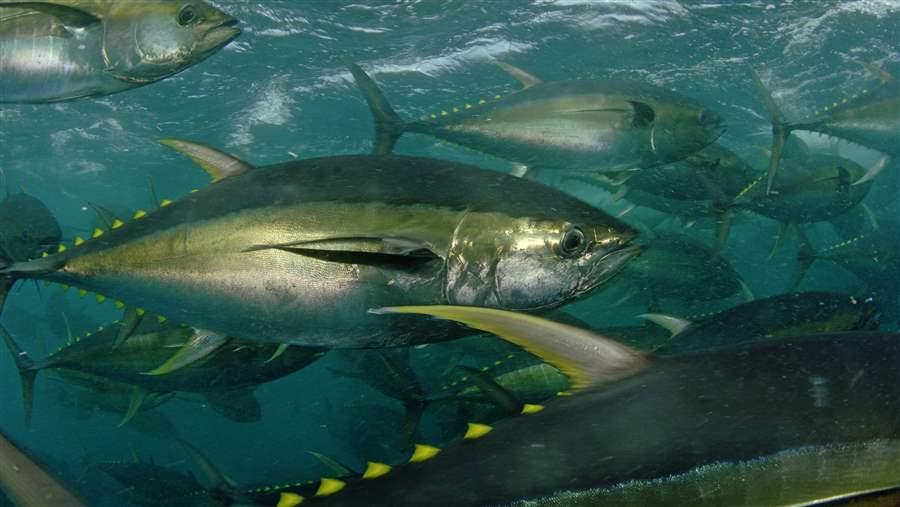Study Outlines New Method for Interpreting Complex Tuna Behavioral Data
 Brian J. Skerry/Getty Images
Brian J. Skerry/Getty ImagesIt is nearly impossible to observe tuna behavior for extended periods because of their speed and deep dives, yet this behavior may have important implications for how fishing is managed. For instance, an accurate estimate of when juvenile bigeye tuna spend time near the surface could help managers reduce how many are caught, which would promote a sustainable population. In a recent study supported by the Lenfest Ocean Program and published in the July 2015 issue of Ecological Applications, scientists offer a new method for interpreting behavior data gathered from tags attached to tuna.
The study was led by Joe Scutt Phillips at the University of Southampton, UK and colleagues in the Pacific. Scutt Phillips is now at the Centre for Environment, Fisheries and Aquaculture Science in the UK.
Instead of direct observation, tuna researchers rely on data from tags attached to tuna for long periods. This study used a tool called an archival tag, which is surgically implanted in a fish’s body and takes periodic measurements, such as depth and the amount of light reaching the tag. It is later recovered, along with a large amount of data. Like other kinds of “bio-logging” data, the results tend to be highly variable and difficult to interpret.
The new method uses a procedure known as hidden Markov modeling to identify a set of “behavioral states” such as diving, resting, or foraging. Researchers have often searched for behavioral patterns by simply inspecting the data, but this can lead them to overlook important patterns or see patterns where there is only noise.
Scutt Phillips and his co-authors tested the accuracy of their model using data from two simulated behavioral patterns with random fluctuations added in. The method correctly identified the behavioral state more than 90 percent of the time. The researchers then tested it on data from three individual yellowfin tuna and three bigeye tuna. It was not possible to verify that the method accurately classified the behavior of those six fish, but it did detect a known pattern of tuna behavior, the tendency to avoid diving at night.
The authors will now apply their method to a larger dataset on tuna in the western Pacific Ocean. The method could also help others interpret the noisy data so common to the science of ecology.
About the Article
Scutt Phillips, J., T.A. Patterson, B. Leroy, G.M. Pilling, and S.J. Nicol. 2015. Objective classification of latent behavioral states in bio-logging data using multivariate-normal hidden Markov models. Ecological Applications 25:1244-1258. http://dx.doi.org/10.1890/14-0862.1.

